Here’s the first in a triple play of Jonas Dupuich’s demo articles recently submitted by our eloquent columnist David Eichhorn. – Ed. 5/18/19
Jonas Dupuich, highly accomplished and partly Japanese-trained bonsai expert and the creator and curator of bonsaitonight.com, joined us this mild November night to talk about pine tree bonsai and the Fall work that we can do with them. He brought a couple trees with him for demonstration purposes, plus a younger tree that we raffled at the end of the night. His talk was tailored to the black and red pine varieties. Perhaps a little of what he discussed can be applied to white and other pines, but do so with caution and consultation. For instance, references to decandling exclude white pines because they don’t get decandled.
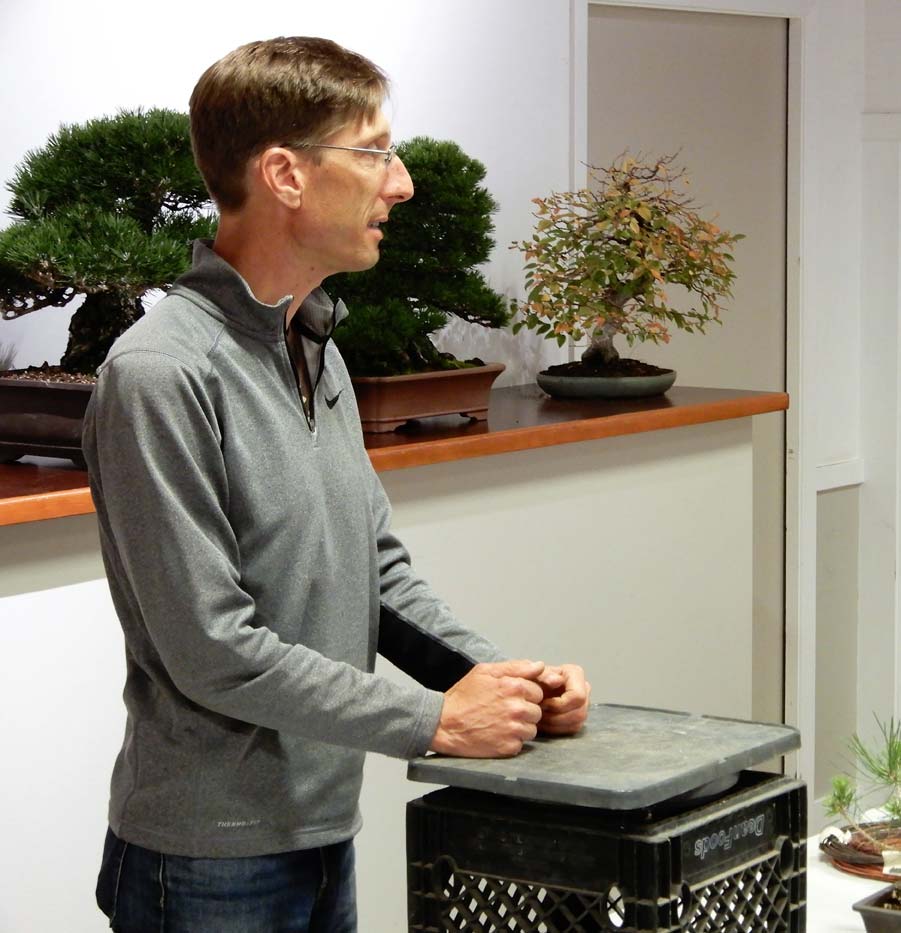
From his extensive experience and experimentation with pines, Jonas has learned that there are two principle activities we can do with pines in the Fall: (1) Thinning and Balancing branches and (2) Needle Plucking. There are several benefits to each of these procedures, most of which involve the energy distribution throughout the tree. For instance, you might thin the branches in a particular area of the tree to reduce the vigor of that area (e.g., to avoid swelling), or you might pluck needles to stimulate bud production. Plucking needles is also used to reduce vigor, but it ultimately pushes the tree, through hormonal activity, to produce more buds in its attempt to restore food production in the plucked area. Jonas described the three types of buds on pines: apical growth tips, needle buds, and adventitious buds–which are the ones that show up when you pluck needles in an area. Adventitious buds are also the ones that show up randomly if a branch is getting sufficient sunlight or other stimulation.

An important note: all the Fall work Jonas recommends assumes the appropriate Spring work has been done. More of the specific benefits of needle plucking and branch thinning, including particulars about timing and techniques, in fact much of Jonas’ talk, are discussed in the note sheets he distributed before the talk. If you would like a copy of those handouts, contact the author of this article, David Eichhorn, or email info@marinbonsai.org.
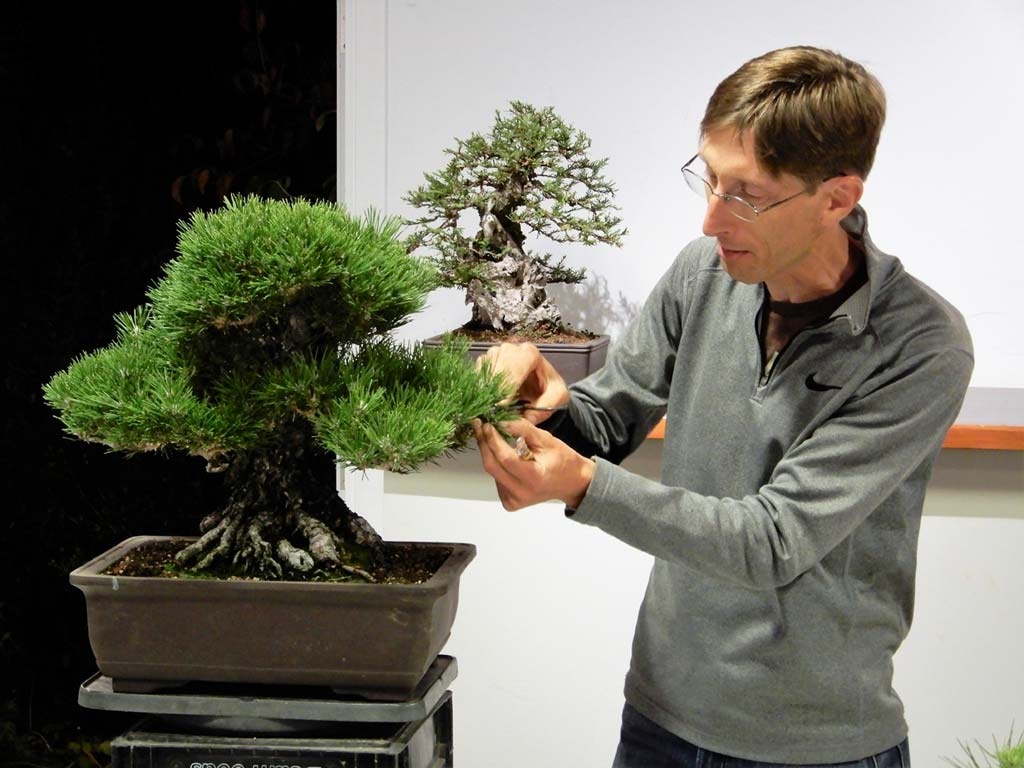
One thing Jonas discussed at some length that you won’t find in the handouts: the specific types of pests that can be largely prevented by keeping up on your needle plucking and branch thinning. The typical pests you might find on pine bonsai include scale, aphids, root aphids (difficult to diagnose), spider mites, and adelgids–a parasite that forms at the base of pine candles. There are various cures for each of these, but the best preventative is thinning, to allow more airflow throughout the tree.
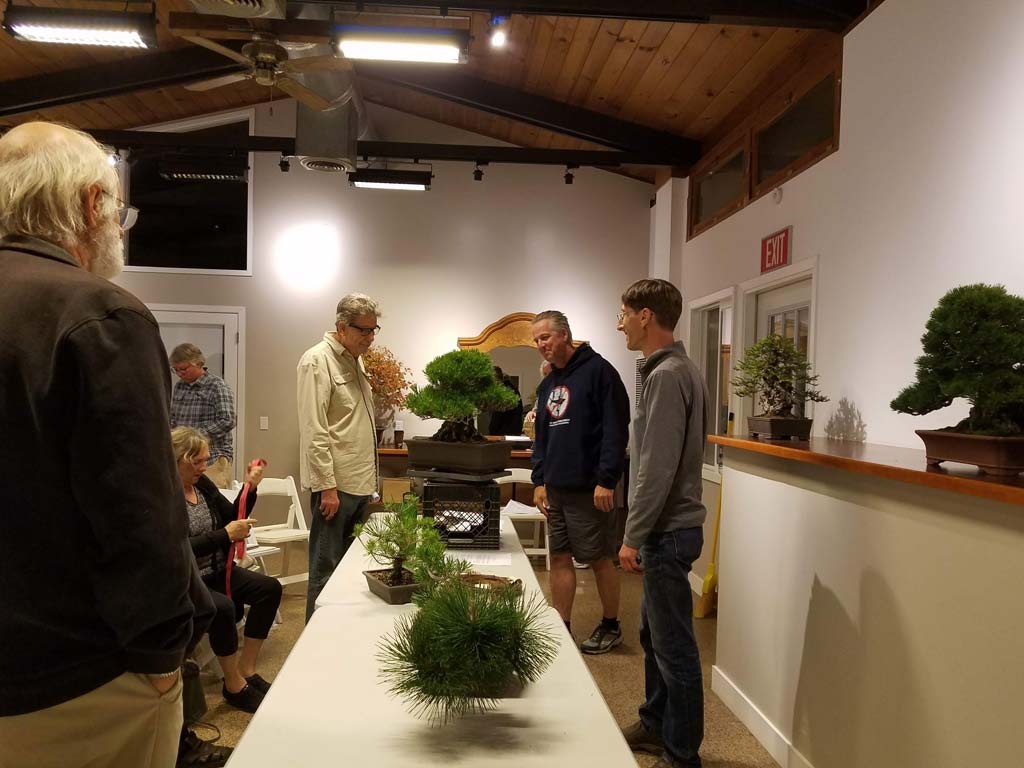
A particularly valuable note from the handout that Jonas emphasized during his talk is that the more branches you have on a developing tree, the shorter your internodes will be. So you may want to hold off on branch thinning for younger pines. Similarly, don’t pluck needles if you’re still trying to fatten up your trunk, because doing so will reduce overall vigor and vigorous growth is key to trunk development.
In his talk and on the handout, Jonas also made sure we understand the difference between plucking old needles, which practically fall right off, and plucking new needles, which require more caution, since they have a tendency to cling to and tear the bark around them. Be careful! Always pull in the direction the needle is growing, NOT down the trunk or branch. Bark tearing can cause unsightly and slow-healing damage on most trees, but pine bark is particularly precious.

When it comes to where on the overall tree we should pluck the most needles for optimum energy distribution, Jonas has his own viewpoint on the strategy to use. He calls his view “unifying” because one popular strategy is to pluck more needles from the strong areas to weaken them and balance the tree, whereas others say to take the same number of needles from all over. Jonas pointed out that the lower, weak areas aren’t likely to have as many needles as the top, strong areas to begin with, so if you take the same proportion of needles from every area, with none being taken from the weakest areas, then you will probably strike the right balance. Jonas’ second handout had a nice illustration of this concept, including a comparison between doing this to a decandled tree versus one that hasn’t been decandled.
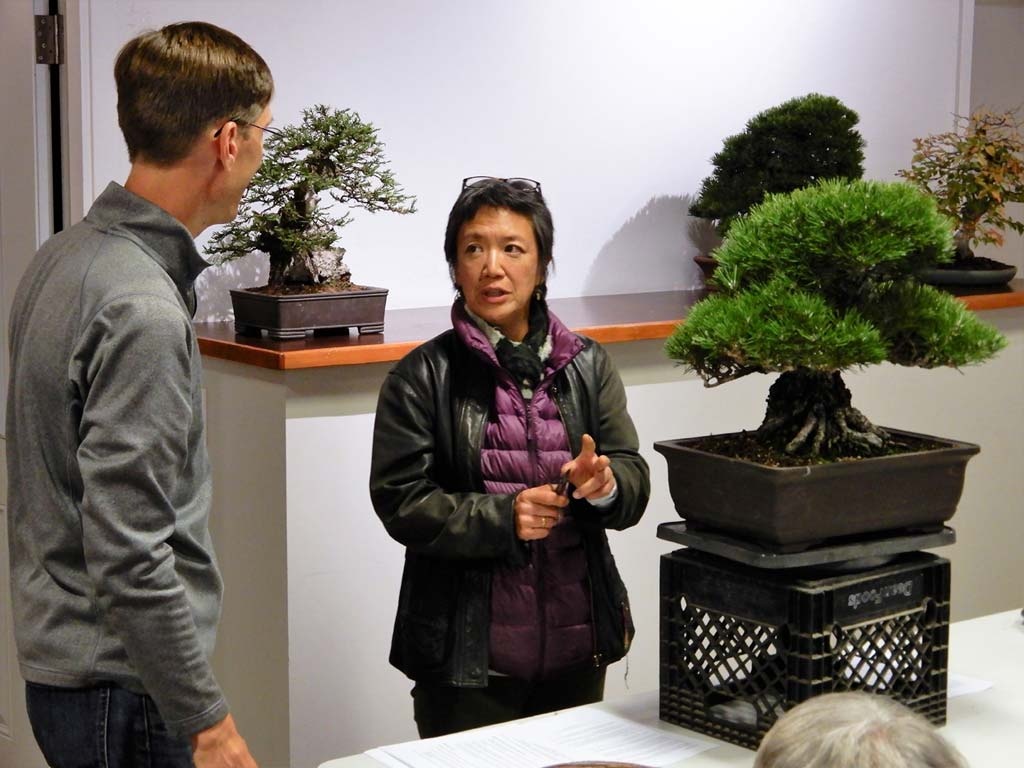
Jonas also let us in on a big trick to help shorten long internodes: at decandling time, you aren’t limited to trimming the actual candles, you can trim back to any point on the branch that has needles and the tree will treat that as the new apex and sprout one or more new buds on the spot. Much like an elm would do, apparently. But again, make sure there are needles where you cut.
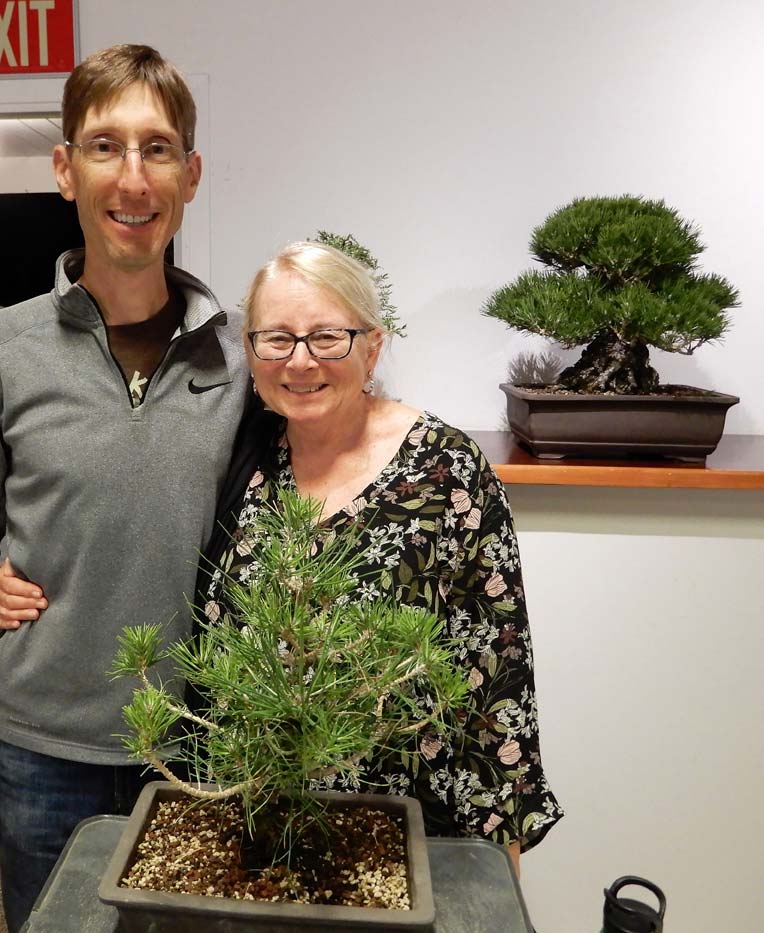
Jonas wrapped up by giving some specific coaching for the raffle tree, which was won by Michaele Jaffe. Congratulations, Michaele!
– David Eichhorn
Photos by George Haas and Sharon Bone


